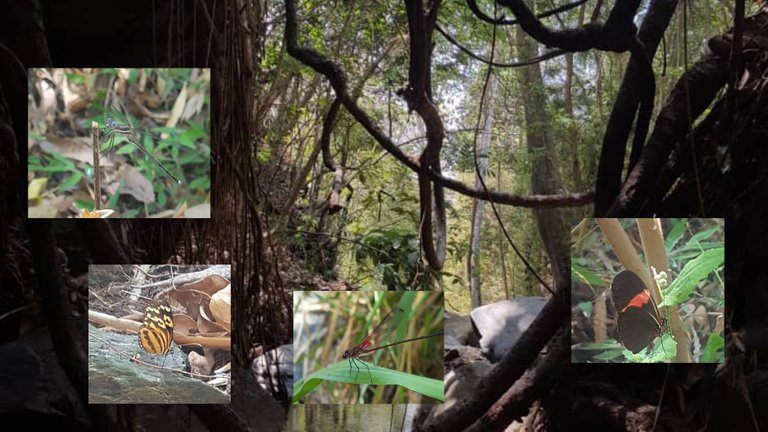
Saludos queridos lectores amantes de la naturaleza. Es un gusto compartirles lo que pude apreciar en un recorrido que realice en una zona boscosa en la montaña del Parque Nacional Henry Pittier en Venezuela. La diversidad en especies de insectos en bosques tropicales es muy grande y esta es solo una pequeña muestra de lo que vi en el río donde la humedad y la luz que penetra a través de la copa de los grandes árboles crea un ambiente propicio para la vida de estos habitantes.
Greetings dear nature-loving readers. It is a pleasure to share with you what I was able to see on a trip I made in a forested area in the mountains of Henry Pittier National Park in Venezuela. The diversity of insect species in tropical forests is very large and this is just a small sample of what I saw in the river where the humidity and light that penetrates through the canopy of large trees creates an environment conducive to the life of these inhabitants.
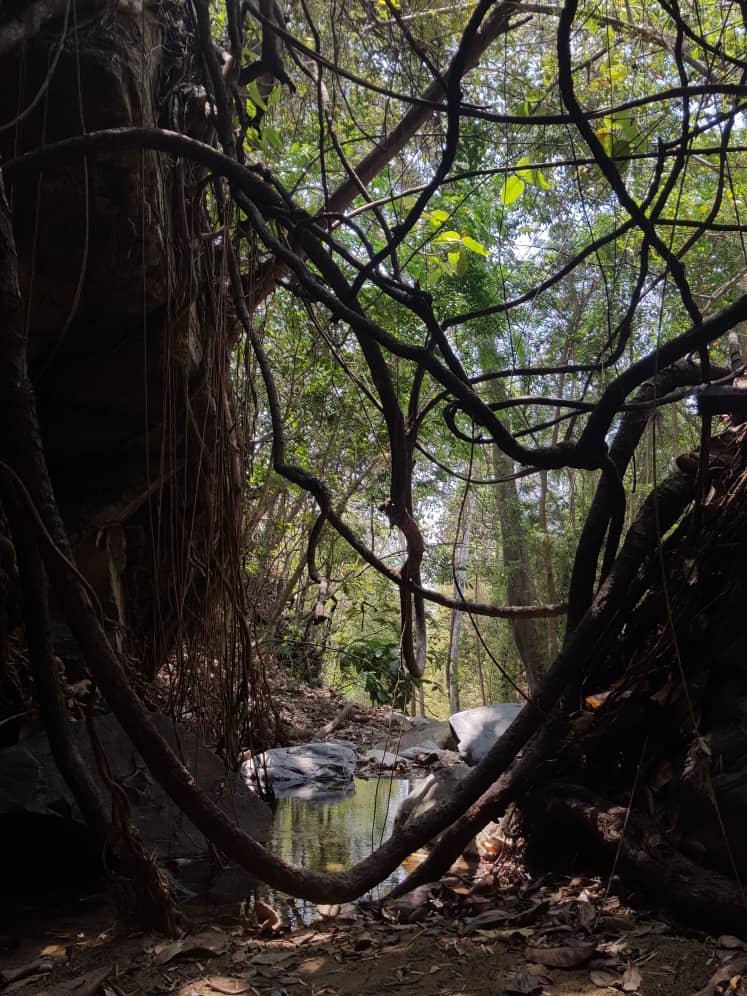
Entre la hojarasca, las lianas y raíces que cuelgan de los árboles, formando una maraña vegetal, entre las rocas, el agua cristalina corre montaña abajo siguiendo su curso. Es un bosque lleno de vida donde el equilibrio de la naturaleza le da a cada uno su espacio.
Among the leaves, vines and roots hanging from the trees, forming a tangle of vegetation, among the rocks, the crystal clear water runs down the mountain following its course. It is a forest full of life where the balance of nature gives everyone their space.
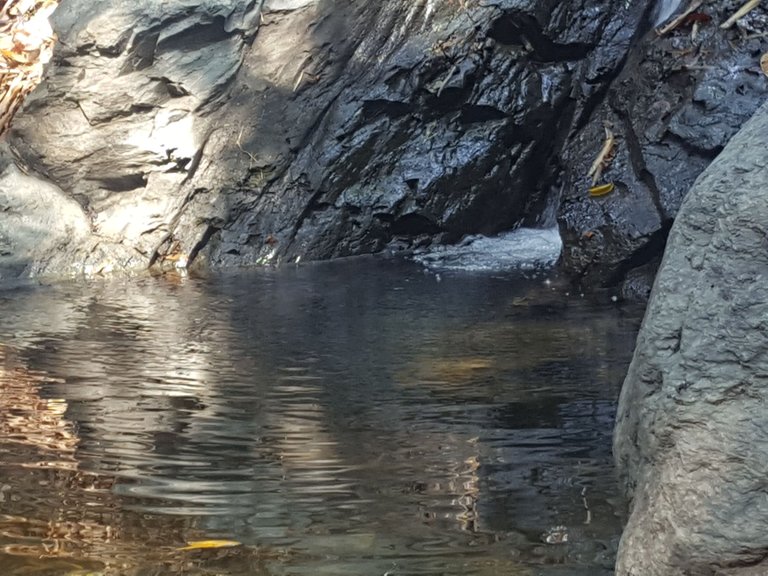
Allí entre tanta diversidad algunos seres no se esconden sino que son tan visibles que pudieramos pensar que no tienen quien los intimide, como esta mariposa de colores negros y rojos que contrastan con el verdor de la vegetacion. Y es que en la naturaleza los colores vivos como el rojo, el amarillo y el naranja son una estrategia para alejar a los depredadores, es una advertencia de que no se los deben comer porque pueden ser toxicos o venenosos. Además estos colores les permiten atraer parejas, esto es muy importante para la supervivencia de la especie.
There among so much diversity some beings do not hide but are so visible that we could think that they have no one to intimidate them, like this butterfly of black and red colors that contrast with the greenery of the vegetation. In nature, bright colors such as red, yellow and orange are a strategy to keep predators away, a warning that they should not be eaten because they can be toxic or poisonous . In addition, these colors allow them to attract mates, which is very important for the survival of the species.
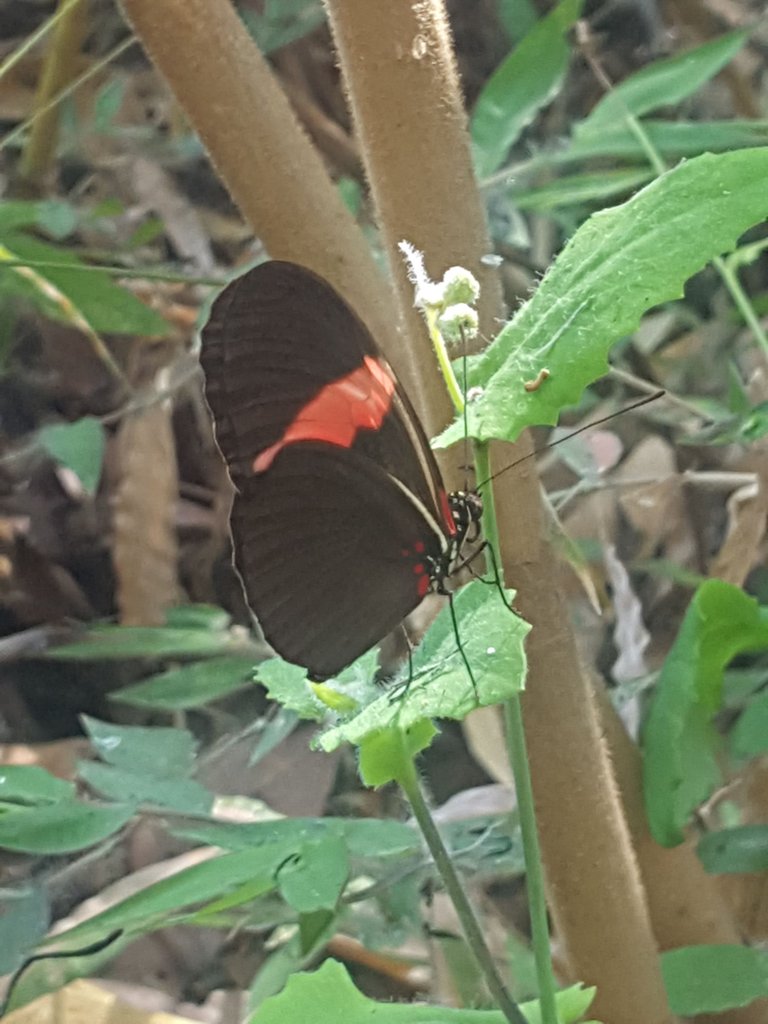
Ella vuela sobre el agua y las plantas y casi no se detiene y no fue fácil fotografiarla. Andan en grupos, revoloteando de aquí para allá, en una danza maravillosa. Esta mariposa es del género Heliconius y el color de las alas es característica de cada especie, en este caso pudiera ser Heliconius melpomene. Fíjense en los puntos blancos en su cuerpo.
She flies over the water and plants and almost never stops and it was not easy to photograph her. They walk in groups, fluttering back and forth, in a wonderful dance. This butterfly is of the genus Heliconius and the color of the wings is characteristic of each species, in this case it could be Heliconius melpomene. Note the white dots on its body.
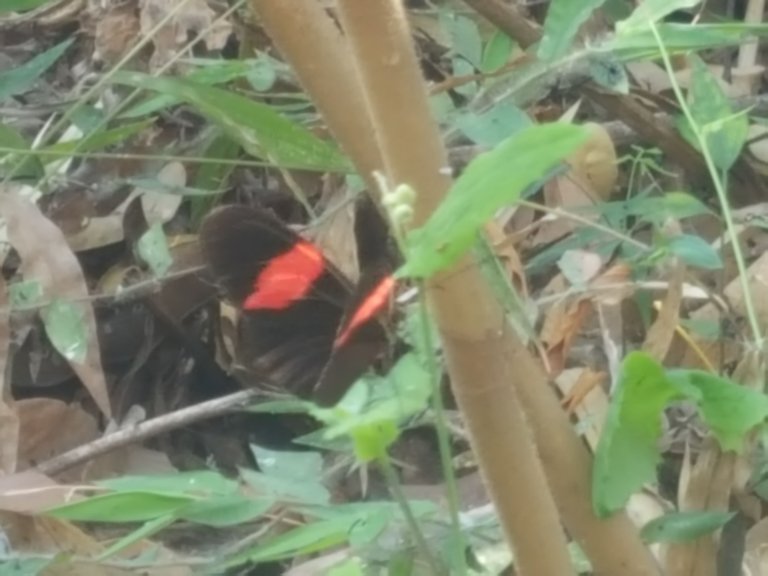
This smaller butterfly with yellow, orange and black colors and perches quietly on the rock, the design of its wings very characteristic of another species of the genus Heliconius, seems to correspond to the species Heliconius ismenius.
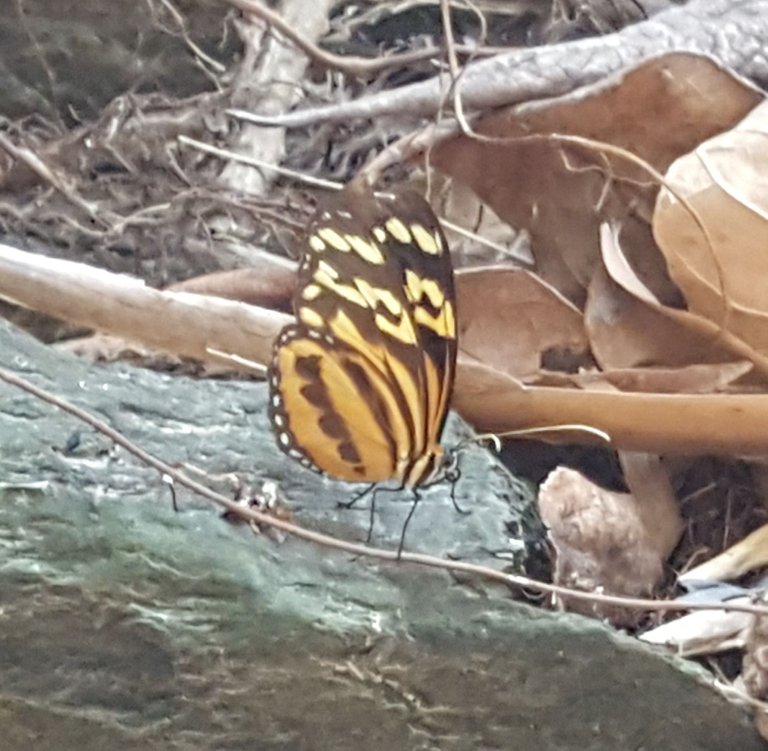
Y volando también sobre las aguas estaban estos dos insectos, se asemejan pero existen unas diferencias importantes entre ellos, en general los llamamos caballitos del diablo o libélulas, pero cada uno tiene las características propias de la especie.
And also flying over the waters were these two insects, they look similar but there are some important differences between them, maybe we call them damselflies or dragonflies, but each one has the characteristics of the species.
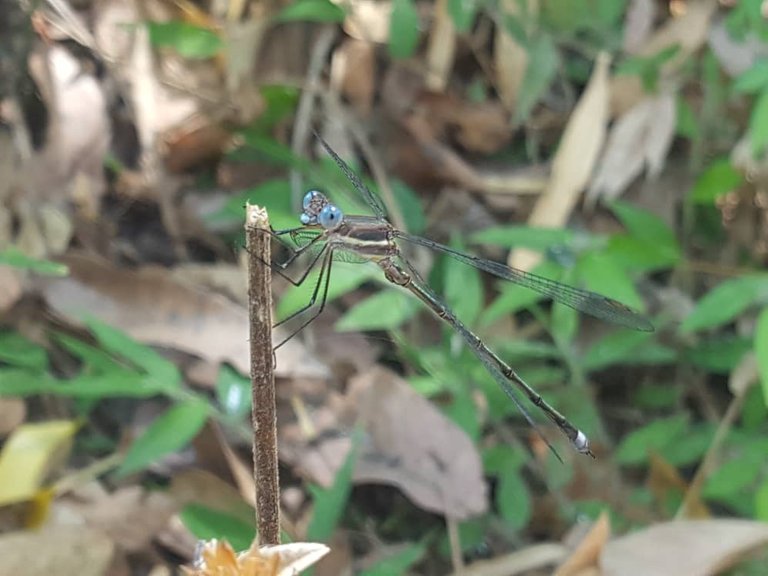
This amazing insect with blue eyes and stylized body, has its wings in a horizontal position, as seen in the photograph, when it perches on a branch. Its body is long and ends in appendages.
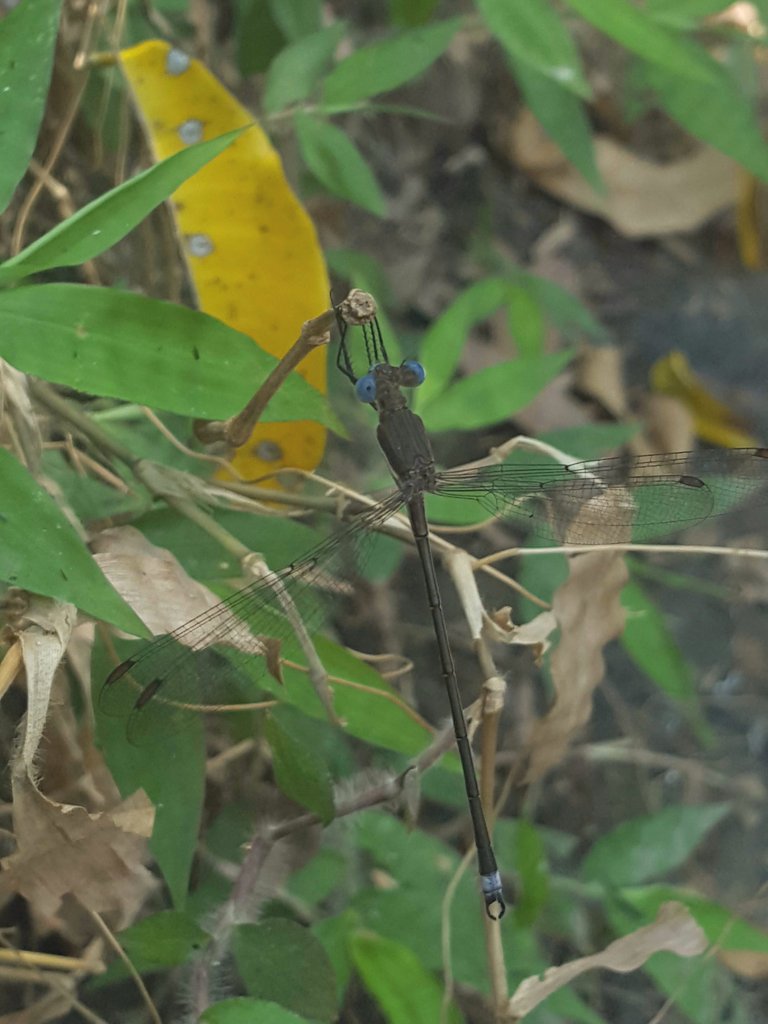
Es una libélula conocida como Rayadora Vigilante de ojos azules (Dythermis nigra) y es común encontrarla en zonas boscosas de sudamérica.
It is a dragonfly known as the blue-eyed skimmer (Dythermis nigra) and is commonly found in wooded areas of South America.
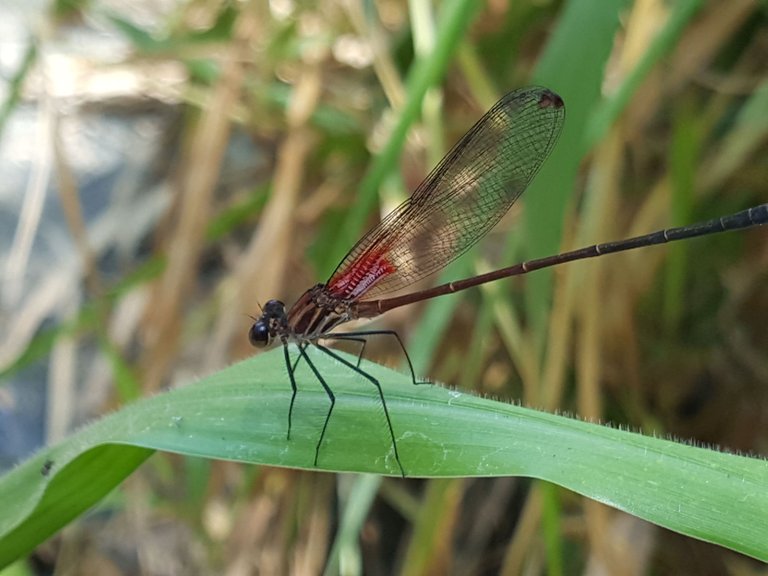
Este otro insecto es un caballito del diablo, llamado caballito escarlata común (Hetaerina americana)
por el color de sus alas. En la fotografía se puede observar cómo mantiene sus alas en posición vertical a diferencia de la Rayadora Vigilante de ojos azules. La diferencia en la posición de las alas cuando están en reposo es una caracteristica que permite diferenciar las libélulas de los caballitos del diablo, aunque como todo en la naturaleza a veces hay excepciones a las reglas.
This other insect is called the common scarlet damselfly (Hetaerina americana) because of the color of its wings, because of the color of its wings. In the photograph you can see how it keeps its wings in an upright position unlike the previous one. This difference in the position of the wings has led to differentiate dragonflies from damselflies, although as everything in nature sometimes there are exceptions to the rules.
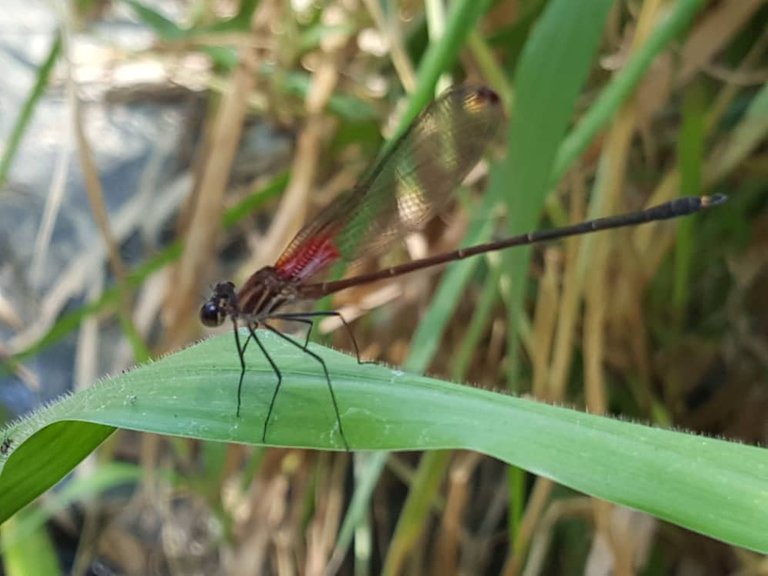
Ambos insectos son depredadores, sus fuertes mandíbulas y sus patas les permiten atrapar a sus presas en el aire, pero también en el agua y por eso los vemos posarse rápidamente sobre esta y volar hacia otro lugar. Son asombrosos en rapidez .
Both insects are predators, their strong jaws and legs allow them to catch their prey in the air, but also in the water and that is why we see them quickly land on the water and fly to another place. They are amazingly fast.
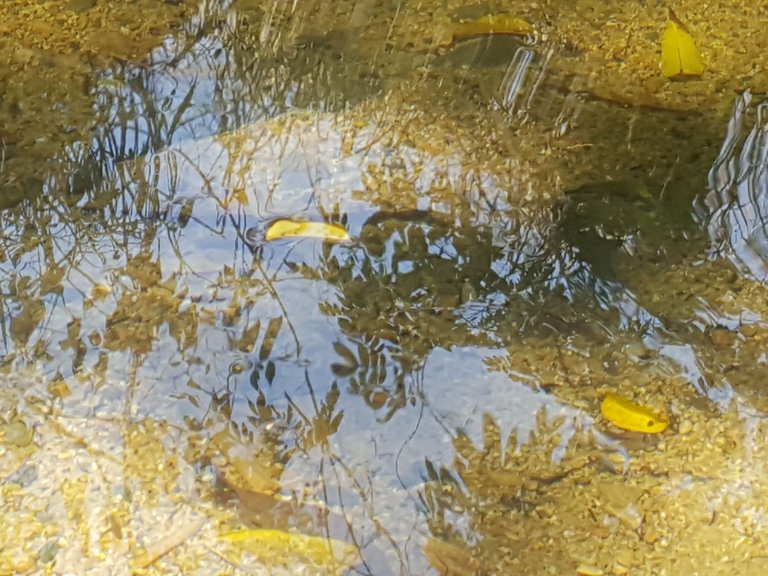
Esta es mi participación en el Amazing Nature Contest: FREE TOPIC - #1/4/23. Muchas gracias por leer

Fuentes consultadas:
https://www.bbc.com/mundo/noticias/2012/05/120517_mariposas_cruza_am
https://www.ecoregistros.org/ficha/Heliconius-melpomene&idusuario=2712&idpais=6
https://macronatura.es/2020/04/16/diferencias-entre-libelulas-y-caballitos-del-diablo/
https://www.naturalista.mx/taxa/51761-Hetaerina-americana/browse_photos
https://especiesamenazadas.org/taxon/arthropoda/insecta/odonata/gomphidae/phyllogomphoides/cola-de-hoja-del-tama
https://www.inaturalist.org/projects/libelulas-y-caballitos-del-diablo-de-venezuela-odonata-registros-ni-casuales
https://www.inaturalist.org/taxa/182601-Dythemis-nigra
https://www.ecoregistros.org/site/imagen.php?id=304743
Todas las fotografias son propias tomadas con un telefono Samsung S6 edge
Translated with www.DeepL.com/Translator (free version)
The rewards earned on this comment will go directly to the people sharing the post on Twitter as long as they are registered with @poshtoken. Sign up at https://hiveposh.com.
I love the photos especially the dragonflies. Haven't seen them here in the city.
I'm glad you liked it. The dragonflies are beautiful and yes , I too have seen them in the city near the water.
Greetings @pachuchay and thank you very much for your comment.
It's my pleasure..
Forest is alive with variety butterflies and dragonflies both lovely to see when flitting from plant to plant.
They are wonderful creatures. Thank you very much for your comment.
Regards @joanstewart
We appreciate your work and your post has been manually curated by zoology and botanic team (@biologistbrito) on behalf of Amazing Nature Community. Keep up the good work!
thanks for sharing
We appreciate your work and your post was manually curated by @none! from the DNA team!
Reach us on Discord to learn more about the project!